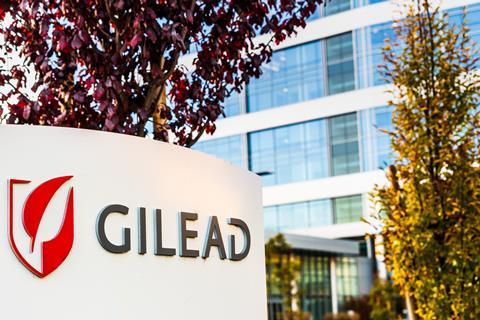Ben Valsler
This week, a drug that raised hopes for its ability to treat an otherwise difficult disease, and raised eyebrows for it’s pricing. Here’s Phillip Broadwith.
Phillip Broadwith
Hepatitis C is a thoroughly unpleasant condition, chronic cases can potentially lead to cirrhosis or liver cancer. It’s caused by the aptly named hepatitis C virus, which affects the liver and is usually transmitted by blood-to-blood contact. There is no vaccine yet, and until relatively recently, treatment was expensive, unpleasant and not particularly effective.
The virus was identified in the 1970s, and three of the leading researchers – Harvey Alter, Michael Houghton and Charles Rice – were awarded the 2020 Nobel prize in physiology or medicine for their parts in pinning it down. Because of their work, we’ve been able to develop better tests, which, among other benefits, allows us to avoid transmitting the virus through blood transfusions.

But treating the infection is hard. The first treatments in the 1990s used interferon alpha – a blood protein that activates the immune system to fight the virus. But these treatments took many months, came with a lot of side effects, and only helped about a third of patients. Adding in the antiviral ribavirin and coating the interferon alpha protein in protective poly(ethylene glycol) – known as PEGylation – improved things a bit, but it was still a long way from being a reliable cure.
In the mid-2000s, the number of deaths from hepatitis C rose significantly – despite declines in new infections. That made the need for new, better drugs even more urgent.
In 2011, pharmaceutical companies Merck and Vertex introduced new protease inhibitor drugs tailored specifically to the hepatitis C virus. Victrelis (or boceprevir) and Incivek (or telaprevir) were instant blockbusters – when taken along with interferon and ribavirin they were significantly more effective at reducing levels of virus within patients. But they retained the long treatment times (6-12 months of dosing 3-times-a-day) and side effect problems associated with interferon treatments.
Enter sofosbuvir – marketed by Gilead as Sovaldi – the first of a new family of hepatitis C drugs that target the virus’s replication machinery. Sofosbuvir is a nucleotide analogue – it mimics uracil, one of the RNA bases that the virus needs to reproduce. But once incorporated into the growing viral RNA, it blocks further RNA synthesis. The compound was originally discovered by Michael Sofia, a scientist at Pharmasset. Gilead bought Pharmasset in 2011 for $11 billion, and went on to develop and commercialise the drug, which was launched in the US in December 2013 and the EU in January 2014.
Sofosbuvir created waves in hepatitis C treatment. Here was a drug offering the possibility of effectively curing large numbers of patients, without the side effects of interferon and ribavirin, and in about a quarter of the time. For those strains of the disease where it still needed to be combined with interferon and/or ribavirin, the treatment duration was also significantly shorter, and hence the side effects less severe.
But it created waves of a different kind as well, because of its price. Gilead justified the drug’s high price on the grounds that it should prevent many patients from developing cirrhosis, cancer or other serious liver problems. Even at tens of thousands of dollars per course of treatment, it is cheaper than extensive hospital treatment including surgery and liver transplants. However, critics suggested the company was simply profiteering. In the first year after its approval, the drug made over $10 billion in sales.

Various groups challenged Gilead’s patents, arguing that the molecule’s structure is an obvious extension of publicly funded research, and hence should not be allowed to be patented. While these challenges were unsuccessful, they did pave the way for Gilead pro-actively licensing generic drug companies to make sofosbuvir for distribution in India and 90 other developing nations.
Sofosbuvir was quickly followed by several other drugs using the same mechanism, building up an array of combination therapies that now offer effective treatment for most of the different strains of the disease, and further reducing requirements for interferon and ribavirin. So while hepatitis C treatment can still be expensive, it is at least pretty effective and, for patients, much more pleasant.
Ben Valsler
That was Chemistry World’s business editor, Phillip Broadwith. Next week, Georgia Mills returns with another drug that’s seen its share of controversy
Georgia Mills
But propofol’s effects – namely sedation and happiness – also lead to it being used as a drug of abuse. It’s rare, because it’s extremely hard to get hold of, but has been associated with a number of accidental deaths
Ben Valsler
Join Georgia next time. Until then – get in touch with any questions or comments – email chemistryworld@rsc.org or tweet @chemistryworld. And find all of our previous podcasts at chemistryworld.com/podcasts. I’m Ben Valsler, thanks for listening.
Additional information
Theme: Opifex by Isaac Joel, via Soundstripe














No comments yet